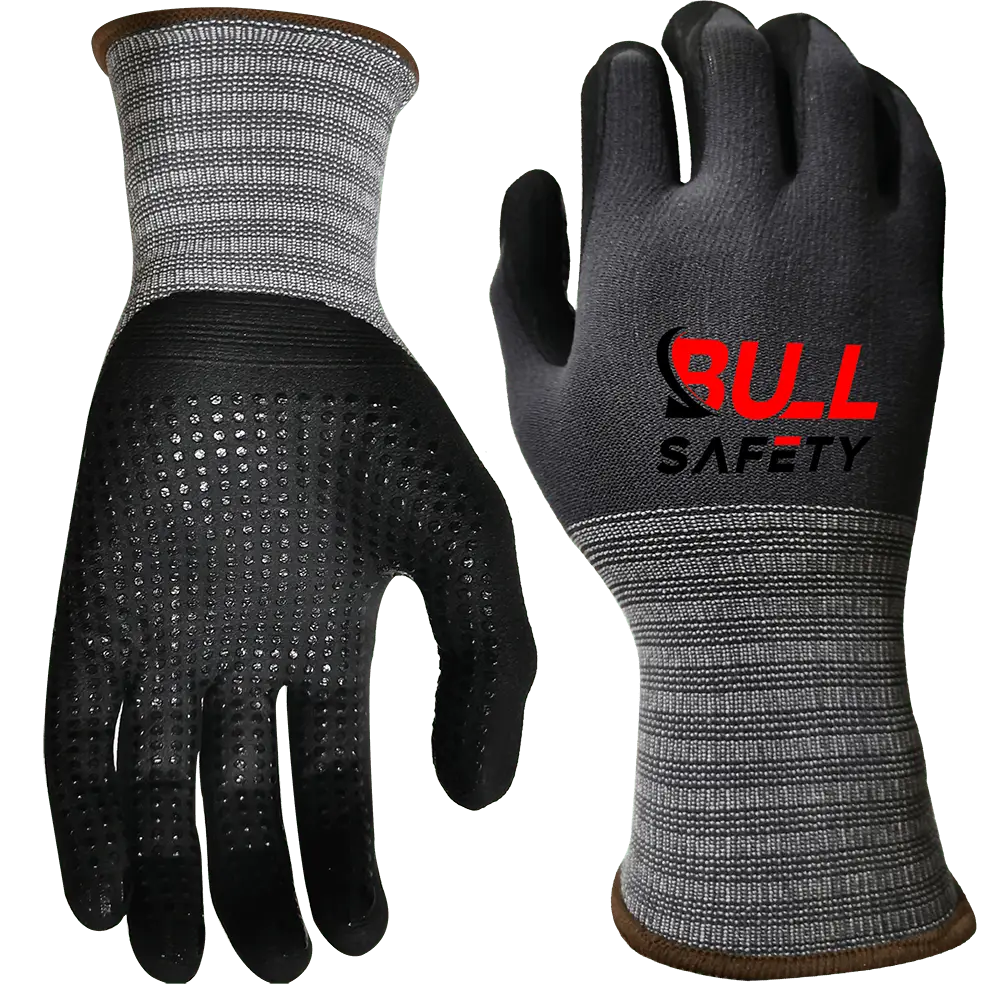Microfoam gloves are often praised for their comfort and flexibility, but what about their durability? Do these lightweight gloves hold up under pressure and maintain performance in challenging work environments?
Yes, microfoam gloves are as durable as claimed. They offer excellent abrasion, puncture, and impact resistance, while remaining flexible. Their durability and comfort make them ideal for tasks in industries like construction, manufacturing, and logistics.
Durability doesn’t just mean resistance to wear and tear—it’s about balancing protection with comfort. Let’s explore the factors that contribute to the high durability of microfoam gloves and why they’re becoming a preferred option in demanding industries.
What Makes Microfoam Gloves Durable?
Microfoam gloves combine advanced materials and manufacturing techniques to provide durability without sacrificing comfort. So, what exactly makes these gloves so resilient in challenging environments?
Microfoam gloves achieve high durability through their flexible knitted fabric base and tough microfoam coating. This combination provides excellent resistance to abrasions, punctures, and exposure to mild chemicals.
Microfoam gloves are constructed with a knitted fabric base that gives them flexibility and comfort. Commonly made from nylon, polyester, or spandex, this base fabric is both stretchy and durable. It’s then coated with a layer of microfoam, usually made of nitrile or polyurethane. This microfoam coating provides the gloves with a tough outer layer that’s resistant to abrasions and minor punctures, while still being lightweight and breathable.
The durability of microfoam gloves is also enhanced by the way the coating is applied. The coating bonds securely with the fabric, ensuring that it doesn’t peel off or wear down quickly. This bond allows the gloves to retain their structural integrity and functionality even after prolonged use in harsh conditions.

Bullsafety 15 gauge spandex and nylon liner gloves with microfoam palm coating for superior grip and comfort.
Another key factor in their durability is their resistance to oils, greases, and some mild chemicals. This makes microfoam gloves versatile enough for use in environments where these substances are present, without breaking down like some other materials would.
| Feature | Microfoam Gloves | Rubber Gloves | Leather Gloves |
|---|---|---|---|
| Durability | High | High | Moderate |
| Resistance to Abrasions | Excellent | Moderate to High | Excellent |
| Resistance to Chemicals | Good | High | Moderate |
| Puncture Resistance | Moderate | High | High |
| Grip | Excellent | Moderate | Good |
How Do Microfoam Gloves Compare to Other High-Durability Gloves?
Microfoam gloves offer a balance of flexibility and durability, making them ideal for tasks that require dexterity. Unlike rubber gloves, which excel at chemical resistance but are bulkier, or leather gloves, known for heavy-duty abrasion resistance but less breathable, microfoam gloves provide protection against abrasions, punctures, and minor chemicals while allowing for a full range of motion.
Leather gloves,known for their resistance to abrasion and heavy-duty use, offer high protection in rugged environments. They are durable but can be less breathable and more cumbersome than microfoam gloves, which are designed to balance protection with comfort and flexibility.
Microfoam gloves sit in the middle ground. They provide a durable outer layer capable of resisting minor abrasions, punctures, and some chemicals, while also being lightweight enough to allow for a full range of motion and dexterity. This makes them an excellent choice for industries where flexibility and durability are both required.
| Glove Type | Durability | Flexibility | Comfort | Resistance to Chemicals |
|---|---|---|---|---|
| Microfoam Gloves | High | High | High | Good |
| Rubber Gloves | High | Moderate | Moderate | Excellent |
| Leather Gloves | High | Moderate | Moderate | Low |
Why Are Microfoam Gloves Ideal for Precision and Medium-Duty Tasks?
Microfoam gloves are ideal for precision and medium-duty tasks due to their lightweight construction and flexible fabric. The microfoam coating enhances grip and dexterity, making them perfect for handling small parts or delicate components with fine motor control.
These gloves are often used in industries like electronics assembly, automotive, and light manufacturing, where workers need to handle small tools or components without the bulk of traditional work gloves. Microfoam gloves provide enough protection against abrasions and minor cuts while offering the tactile sensitivity needed for precision work.
Key Benefits of Microfoam Gloves for Precision Tasks:
- Excellent Dexterity: Microfoam gloves conform to the hand, providing a snug fit that enhances precision.
- Comfortable Fit: The lightweight material ensures comfort, reducing fatigue during long hours of work.
- Enhanced Grip: The microfoam coating provides superior grip on both dry and slightly wet surfaces, reducing the risk of slips or drops.
How Durable Are Microfoam Gloves in Tough Environments?
Microfoam gloves are durable in moderately demanding environments, offering protection against light abrasions, oils, and mild chemicals. While not suitable for extreme conditions, they excel in industries like automotive and logistics, providing comfort, dexterity, and protection during tasks like assembly, parts handling, and sorting. Their durability makes them ideal for medium-duty tasks.
| Industry | Typical Use Case | Durability Benefit |
|---|---|---|
| Automotive | Assembly, small part handling | Abrasion and oil resistance |
| Manufacturing | Light assembly, handling components | Protection against scrapes, oils, and greases |
| Construction | Handling tools and light machinery | Resistance to abrasions and punctures |
| Electronics | Assembly, delicate tasks | Excellent dexterity and wear resistance |
Are Microfoam Gloves the Best Choice for Your Business?
Microfoam gloves are ideal for businesses needing durable, versatile gloves for medium-duty tasks. They offer excellent abrasion, oil, and mild chemical resistance, making them perfect for industries like automotive and light manufacturing. However, they are not suitable for extreme conditions, such as high heat or harsh chemicals, where nitrile or leather gloves are better options.
How to Choose the Right Microfoam Gloves for Your Needs
To choose the right microfoam gloves, consider the protection level (moderate for abrasions and punctures), grip needs (for handling small parts or machinery), chemical resistance (ideal for oils and mild chemicals), and comfort (lightweight and breathable for long wear).
It’s essential to consider the specific requirements of your work environment. Think about the following factors:
- Level of Protection: Microfoam gloves offer moderate protection against abrasions and punctures but may not be suitable for heavy-duty tasks.
- Grip Requirements: If your work involves handling small parts or operating machinery, look for microfoam gloves with enhanced grip and tactile sensitivity.
- Chemical Exposure: If workers are exposed to oils or mild chemicals, microfoam gloves provide decent protection, though they may not withstand harsh chemicals for extended periods.
- Comfort: Microfoam gloves are lightweight and breathable, making them an excellent choice for workers who need to wear gloves for extended periods.
Conclusion
Microfoam gloves offer high durability, excellent flexibility, and superior comfort, making them a reliable choice for medium-duty tasks across various industries. While they may not be suitable for extreme environments, their resistance to abrasions, oils, and chemicals, along with their lightweight design, makes them a great all-around option for workers needing both protection and dexterity.



